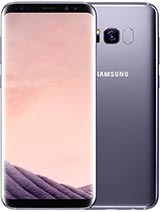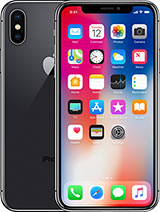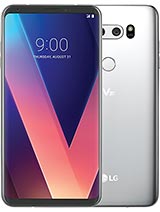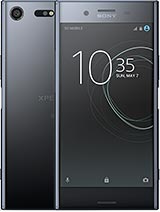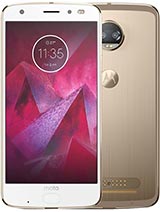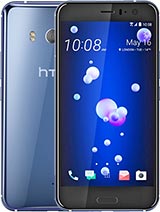Samsung Galaxy Note8 review

Wrapping it up
Depending on where you are, you may not have seen a new Galaxy Note in two or three years (we're not counting the Note That Never Was). And from the skyrocketing pre-order numbers, we can tell there is plenty of pent-up demand.
The S Pen hasn't changed much - that is to say, it's still the heart of the Galaxy Note8 experience. The screen is barely bigger than the S8+ screen, though we do like its flatter shape. Note taking is unrivaled on mobile - there's just no viable alternative on any platform.
This season, the Note comes with another advantage over the S8, the dual camera. It offers 2x optical zoom and improved bokeh effects. It still offers excellent image quality in both good and low light. While a bit late to the party, Samsung was the first to add OIS to the secondary camera, a vital feature for telephoto shots.

The last few Notes had lost their identity - other than the S Pen, they were not clearly better than the Galaxy S of the same vintage. They were bigger, but later the S edge and S Plus models did well to close that gap.
The Galaxy Note8 is once again clearly the top Samsung device of the year. Stylus aside, the dual camera offers a legitimate improvement. The basic feature is to offer 2x optical zoom - from 26mm to 52mm - and you get good quality images (helped by the OIS, which reduces handshake issues). It's also used for Live Focus, a digital bokeh that can be retuned after the photo was taken.
The battery capacity is slightly lower than that of the S8+, though our tests show that Samsung managed to even out the differences. It even fixed a small 3D performance issue with the Snapdragon version.
Samsung Galaxy Note8 key text findings
- The overall design falls clearly in line with that on the S8 and S8+, but the Note does employ softer and narrower edges. The Infinity display, while bigger, is less curvy this time. This arguably makes for better ergonomics and handling overall.
- The perfectly symmetric body is slick and durable, thanks to front and rear Gorilla Glass 5 and IP68 certification. However, the all-glass body is quite slippery.
- The new 18.5:9 aspect ratio works great for portrait gaming and has its benefits for browsing and multi-tasking. However, the Note8 is quite tall for one handed use and reaching the notification area can be tricky. It is more of a two-hand device, as necessitated by the S-Pen.
- The fingerprint reader is really awkwardly placed - too high up and right next to the camera.
- The 6.3" Infinity display is the bigger and arguably most impressive of its kind. It performs on par with the S8 pair, but is not necessarily brighter or with better contrast. The Note8 boasts Mobile HDR Premium certification, which should allow it to reproduce most HDR content out there eventually. Netflix is already offering support. The new white point manual adjustment allows for even better color calibration.
- With 1 Gbit/s LTE, MU-MIMO Wi-Fi a/c and Bluetooth 5.0, to name a few, the Note8 is perfectly equipped in terms of modern connectivity options. We also appreciate the Display Port 4K video out support. DeX could start gaining more ground.
- Battery life is surprisingly good on the Exynos variant of the Note8. Despite the smaller battery, it is on par with the S8+ thanks mostly to great standby times. The Snapdragon variety lags behind noticeably due to shorter standby times.
- The software build on the Note8 is the same as on the S8, if you don't count the ability to toggle the nav bar on and off, and the S-Pen. But you obviously have to count the S-Pen since that's the defining feature and that's where you get a ton of functionality - advanced screenshots, magnification, translation, hover gestures, live messages, note taking - hard to name them all.
- The Exynos 8895 chipset delivers a chart-topping performance in both CPU and GPU synthetic benchmarks. The Snapdragon 835 and Exynos 8895 chips perform almost identically in CPU benchmarks. By bringing the Adreno 540 GPU clock back to normal, Samsung has managed to mostly eliminate the graphics performance difference observed in the S8 and S8+. Overall, the Exynos and Snapdragon variants are closer than ever in performance.
- The loudspeaker scores a Good rating in our test, pretty much at the level of the competition. It's still just a single speaker, though.
- The main 26mm 12MP Dual Pixel camera on the Note8 performs just like on the S8 duo and is really impressive, both in bright light and low-light conditions.
- The secondary 52mm telephoto 12MP shooter captures plenty of detail and also has the benefit of OIS. Still, it lacks Dual Pixel technology and is slower and less accurate to focus. Also, it is not as good as the primary camera in low-light, which is why the phone switches over automatically as it sees fit. Multi-Frame Image Processing is really impressive.
- The new Live Focus mode works well and justifies having the extra sensor in itself. The camera UI is much more organized now. Stickers, stamps, filters and dynamic overlays are more plentiful than ever.
- 4K videos look great, 1080p maintains high quality as well. Both cameras have OIS and EIS that can go all the way up to 4K.
- The Note8 borrows its great 8MP, f/1.7 autofocus selfie shooter from the S8 pair as well. It is bright enough to perform well in most lighting conditions.
Noteworthy alternatives
There used to be quite the size difference between a Galaxy S and a Note. This year it's smaller than ever with the Note8 beating the Galaxy S8+ by a mere 0.1". Plus, that 6.2" Super AMOLED panel has the same resolution, though it is missing support for HDR and (perhaps more importantly) an S Pen.
Of course, not everyone finds an S Pen useful, but the money you save by getting an S8+ is always welcome. You get the same chipsets (though 2 gigs less RAM) and a similar camera image quality. You'll lose the 2x optical zoom, however.
If money is no object, you might consider the Apple iPhone X - one of the very few handsets that cost more than the Note. And it has a bezel-less design too, with an AMOLED display (courtesy of Samsung, by the way).
The new dual camera can record 4K 2160p / 60fps video as well as 1080p / 240fps, which is beyond the reach of the Note8. The dual camera has dual OIS too as well as 2x optical zoom, but it also adds the new studio light feature to make Portrait mode that much more dramatic.
LG was feeling confident that the V30 can take the Galaxy phablet head on. It too has an OLED display (LG's own make), which is nearly as wide as the Note8's, but not quite as tall. The V30 is more compact in general.
Its dual camera zooms out instead of in, offering a wide 120° view of the scene. The LG V30 boasts a brighter aperture, but Samsung has the bigger pixels. The V30 also has more extensive manual controls for video recording.
The Sony Xperia XZ Premium has the world's only mobile 4K screen with HDR support (it measures 5.46"). It would have been perfect for VR, though Sony is not committed to mobile VR the way Samsung is.
Anyway, the single 19MP camera has a trick that even the iPhone can't match - slow-mo video at 960fps. True, it's at a lower resolution, and it only captures less than a second real time.
The Motorola Moto Z2 Force has yet another AMOLED screen (a 5.5" QHD unit), but what makes it special is the ShatterShield - a plastic lens that is much more resistant to cracks than glass (scratching is another matter).
It supports MotoMods, which add new functionality but also rack up costs (to an already expensive phone). The built-in camera is great (and you can add others), but we're not quite fans of the hump. Battery life is average at best, hampered by a tiny battery.
The HTC U11 impressed us with its camera, which offered quality and speed along the same lines as the S8 (and by extension the Note8). It can record 1080p video at 120fps - not quite iPhone X level, but the Note8 drops you to 720p if you want slow-mo.
The U11 has EdgeSense - you squeeze the phone to trigger a certain action, including Amazon Alexa (instead of Bixby or even the Google Assistant). The new Google Pixels may have this same feature too.
Two rivals are yet to come. The Google Pixel XL 2 will be unveiled on October 4, and while we know it won't be cheap, it is said to have a stellar camera. If you care about software, the Google phone has home-field advantage.
The other soon-to-be a competitor is the Huawei Mate 10 (expected October 16). It will have a 5.9" display - LCD on the regular model, AMOLED on the Pro - with the latest Kirin chipset. We'll also likely see a new generation Leica dual camera with an f/1.6 aperture (watch out, V30).
Final verdict
Two flagships a year is always tricky - 6 months is not enough for technology to improve enough to get a definitive update. Exclusive features like the S Pen do help and Samsung also saved up the dual camera, even though the competition had been offering this feature since 2016.
The Samsung Galaxy Note8 is the most expensive phone of the series yet, a fact you can't get around. Fact number two: it's the most versatile smartphone you can currently get. That alone should be enough to give the right users the right motivation. Or, you have to have a use for it to justify the asking price. Either way, the Galaxy Note8 will deliver the goods. And will do so in a way that very few phones, if any, can match.
Reader comments
- Anonymous
- 02 Dec 2024
- Nu7
I have one but unfortunately it has a screen problem.. so how much is the screen and where can I get it in Nigeria?
- himed
- 04 Oct 2024
- gXU
Does changing the touch of Note 8 mobile affect mobile touch or not?
